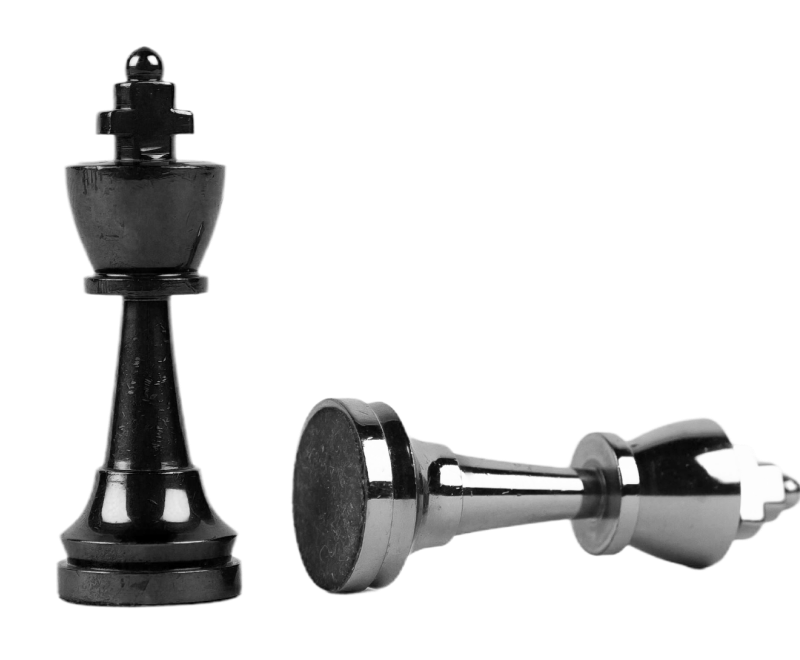You wouldn’t be surprised if we told you games have been around for centuries, way before Turochamp (the first computer game, a chess game in fact, that saw the light of day in 1948). They have always been a part of our history and culture- being one of the oldest forms of human interaction. We play games to entertain ourselves, to challenge ourselves, to bond with others or to learn something new. And over the past two decades, as we are slowly migrating to the digital world, these playful behaviors came along with us.
A game almost always consists of a set of principles to make it work: there needs to be a challenge to keep the process interesting. Points can be awarded to players who complete the challenges according to the rules. In some cases there’s a leaderboard system based on who got the most points. There can also be constraints. Hangman has a certain amount of letters you can suggest before the person is hanged. With Hints you need to portray as much as possible before time is up without using any words. It all comes together in a neat packaged journey for the players with an easy start, exciting middle part and often a nerve-racking ending. These principles have been used in board games for centuries, in video games for ages, and they have been embraced in the creation of apps and websites the last few years.
Principles of Gamification
The principles named above are also gamification principles. Gamification is using techniques from games in non game environments. It can keep users engaged in your product in a fun way, though it’s no easy task. If the product isn’t well thought out yet, slapping some gamification on top won’t disguise these flaws. Thinking about wanting to add gamification principles to your product early on in the design process is fine. Just keep in mind that the core of the product is as crystal clear as can be before you move on to gamifying it. To help with this process, we highly recommend creating a Content Core. With this method, you define what users look for in your product, where they can find that and what their next step will be once they find it. Once you’ve defined this it becomes much easier to see where gamification elements will be a fun factor for your future users.
Gamifying parts of the product that users don’t deem essential or interesting is not only a waste of your time, but also a waste of the product’s potential. Users should always be engaging with the product because they want to, and gamification is an extra bonus method to get them there.
Gamification in the field
So, why is gamification relevant? and more specifically: why is it relevant in UX Design? When writing this post we held most (if not all) UX principles next to the gamification principles, and just started connecting the dots. Hurray for UX research!
Gamification can push users to go that extra mile and reward them when they do so. It adds an extra layer of fun to the overall experience. People are more likely to engage in activities if there is an achievement to earn at the end of it. It can help increase user engagement as users will want to come back to increase their streak or earn a new reward. They build their own routine around it to make sure they find 3 minutes to log in every day– creating commitment and consistency. For this to work well it needs to feel valuable for the user, like earning an achievement.
In some products, a leaderboard is also a factor to push users to do their absolute best.
A good example of this is Apple’s fitness rings. Your progress can be shared with family or friends, and you can check in on each other's progress during the day. You can even compete with a specific family member or friend, to really up the stakes. Social proof!
Scarcity & earning something that is hard to obtain
Apple uses calm, motivating copywriting to update you throughout the day that you are close to completing one of your rings or earning a badge. Badges aren’t handed out willy-nilly though. You really have to earn them. Some are harder to obtain than others, being specific monthly challenges you can’t earn once the month is over, or just pushing a user to their absolute limits to receive a badge. Once something is harder to obtain it becomes more interesting to own it and flaunt it. A perfect example of scarcity.
Sequencing & dividing actions into bite size chunks
Products where users learns something new are often accompanied by a roadmap. They can easily see what their current skill level is, and what they will be working towards. When logging in for the first time, all of the options/levels/classes will be locked. But you can already see the titles, so you know what will be coming up and what you will be working towards. That journey can be seen as sequencing and/or shaping. Sequencing is a term often used in UX to describe that users are more likely to take action when said action is divided into multiple smaller chunks. Shaping is a term to describe that if you want to teach your users something new, to start with the smallest thing and build up from there.
Ofcourse, there’s many more links between UX- and gamification principles; which is probably why it works so well! We wanted to highlight the ones that are easy to implement into your designs, so speaking of designs, onwards to the next step. We now know which UX principles and gamification principles go hand in hand. But which one(s) do you end up implementing in your designs?
Our own experience
Choosing which gamification elements to use, and when to use them isn’t always an obvious practice. In the designs we made for Rally Reader however, we carefully implemented the patterns that we saw fit, depending on what the user would be experiencing and how the gamification would amplify this experience. As the main users for Rally Reader are kids, making the app feel like a game was a no-brainer, as was the reward system. Kids often learn a specific behavior well if there is a reward system tied to it to make learning said behavior worth it.
Rally Reader provides a fun, digitally guided reading experience without needing an instructor. Kids can learn to read at their own pace, with real-time oral feedback. To further motivate them with reading, there’s also the possibility to unlock “magic words”– earning rewards when unlocking these. Magic words make up 75% of the English language, so it was only natural to reward kids when they read them correctly.
After each reading session, kids can check their reading speed, review their daily reading goal and their reading persistence. With progress bars on each goal, it’s easy to keep track of what they’ve learned so far and what will be their next steps. And when they achieve one of these goals, they will be rewarded with badges to display on their profile and dashboard. But no matter how big or small the improvement of the reading is, a celebration will always be in order. Becoming the master of words is now something kids look forward to and don’t shy away from.
And now it’s your turn!
Gamification elements can be a lot of fun. They can be applied to intrigue your users and let them interact with your product in other, more playful ways than most originally thought. Use gamification elements with good intent though, but doesn’t every designer design with good intention? ;) Adding-in gamification is no different. The best part about gamification is that it has no borders. Whatever industry your product might thrive in, gamification can thrive along with it.
Have some ideas and think gamification can really deepen the experience? Our team of UX Designers is at the ready to help make this idea a reality. Send us a message if there is anything we can do to help!


